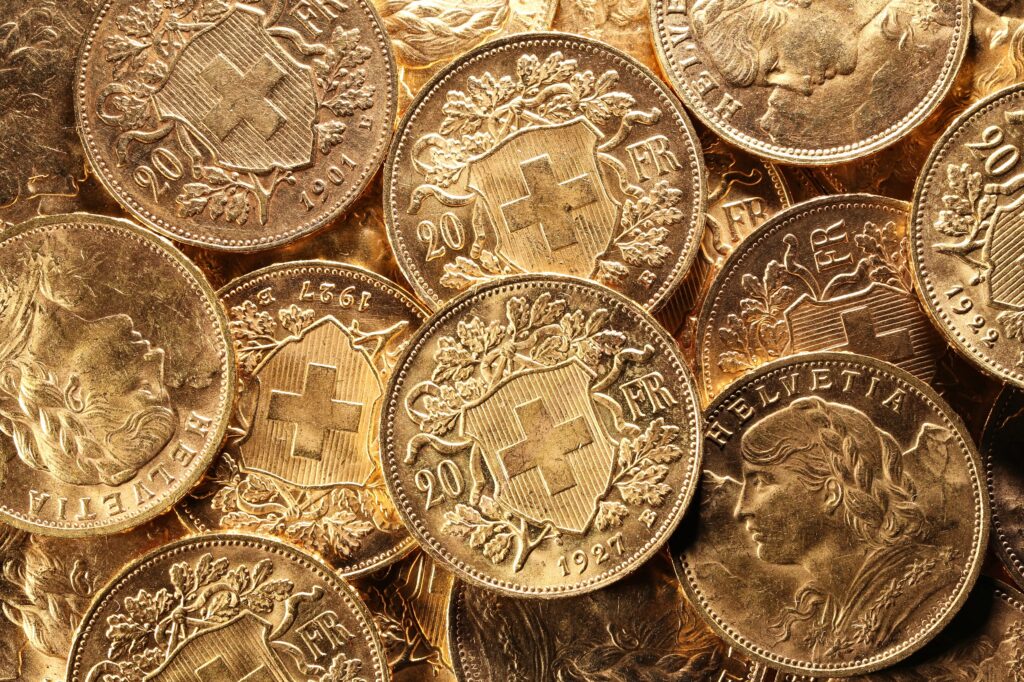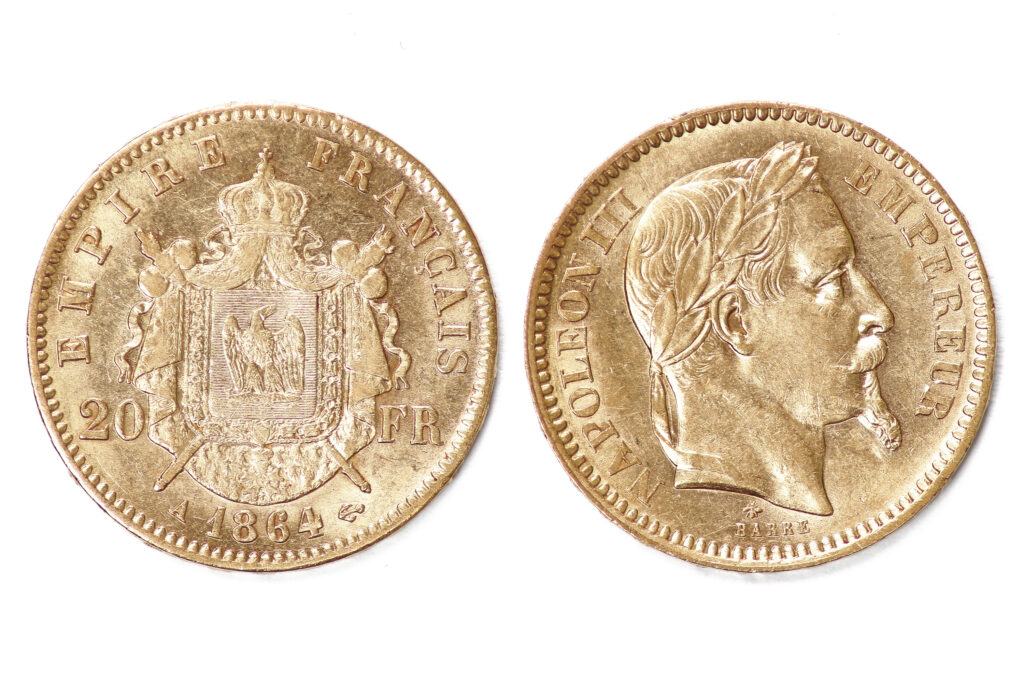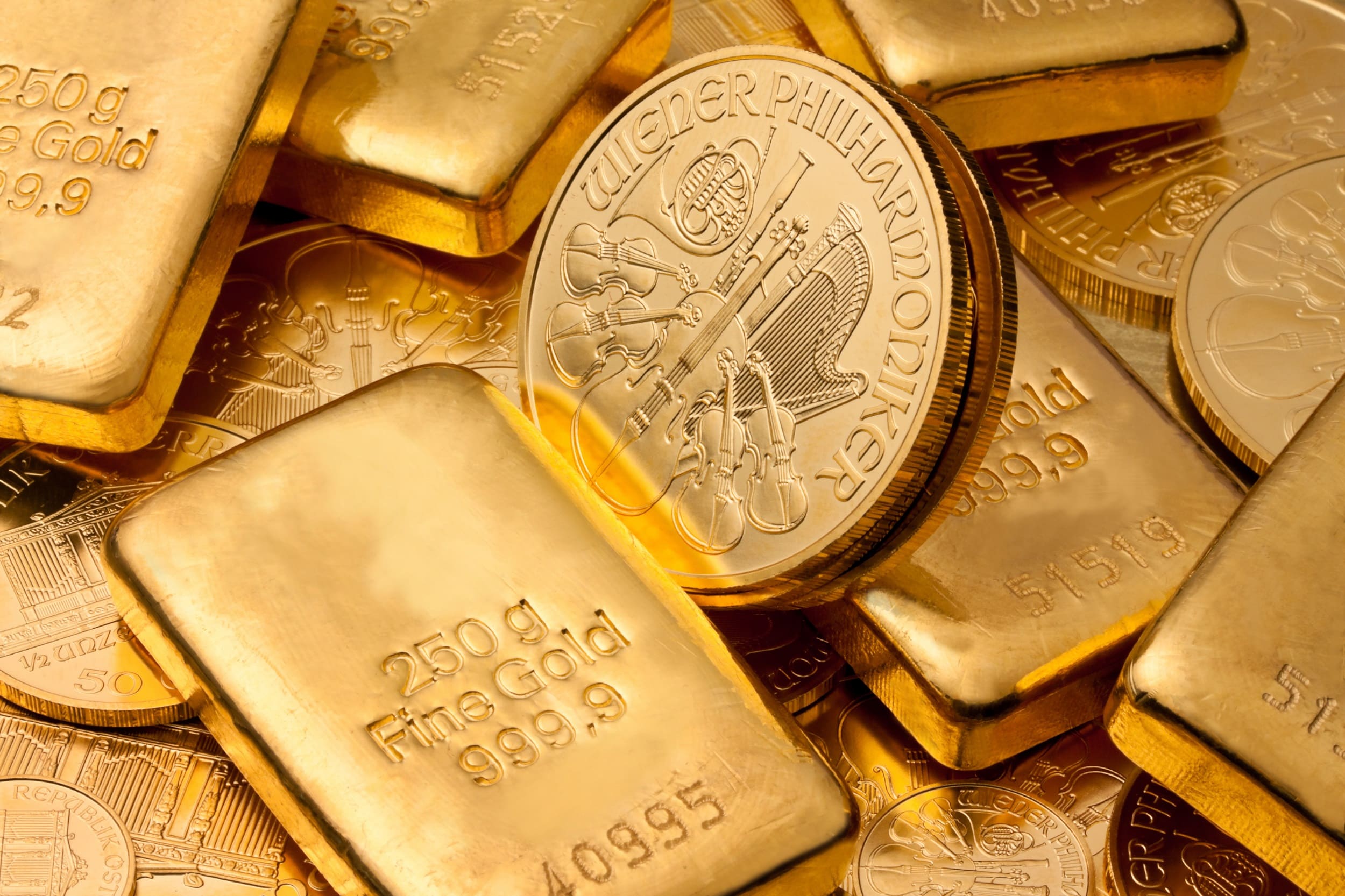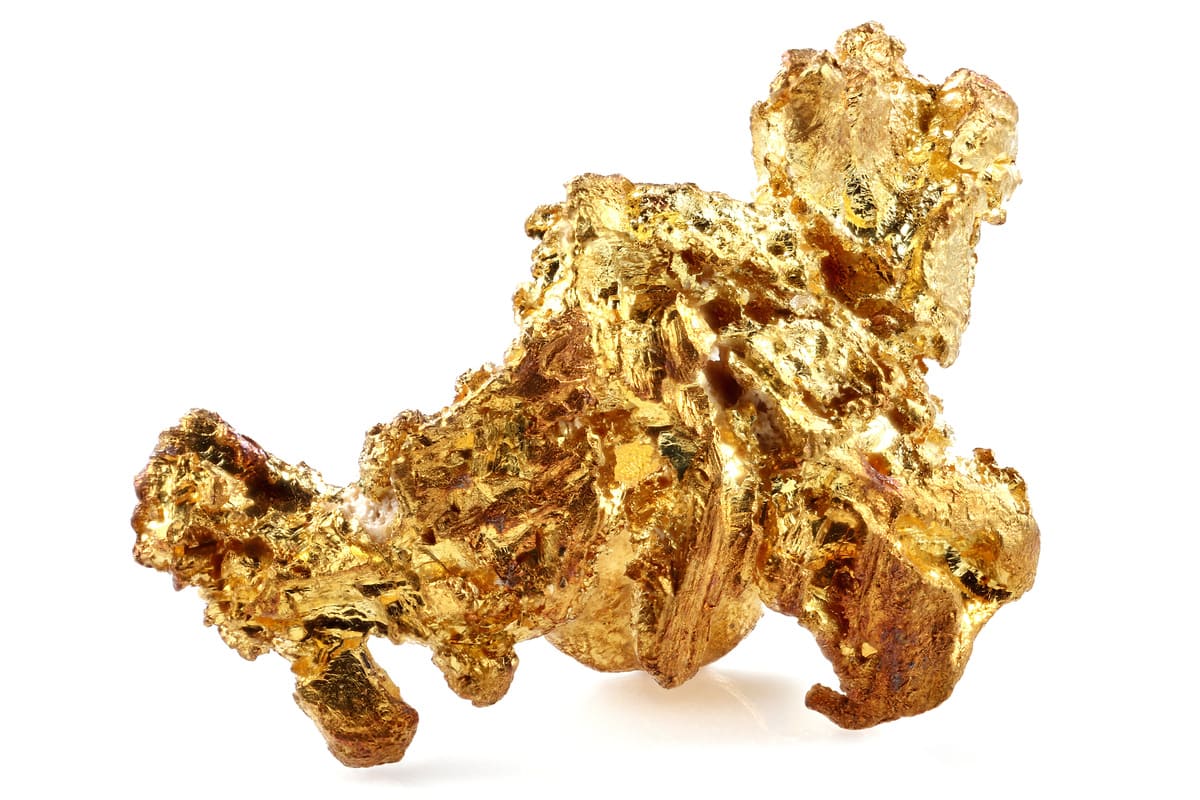The origins of the gold-silver ratio
Additional information > The fundamentals of precious metals – a broad introduction to the basic principles > The origins of the gold-silver ratio
Gold and silver are both considered commodity money. Throughout history their use within monetary systems has been a prominent and enduring feature of many different cultures. And even though they have somewhat faded into the background since the dawn of the age of paper money, both gold and silver are still widely regarded as monetary precious metals.
In this comparative relationship, gold has always been considered the ‘big brother’ of silver. So the latter soon gathered a reputation as the little man’s gold. And while silver was mainly used for everyday transactions due to its lower value density, the precious yellow metal itself was mostly intended for wholesale trading.
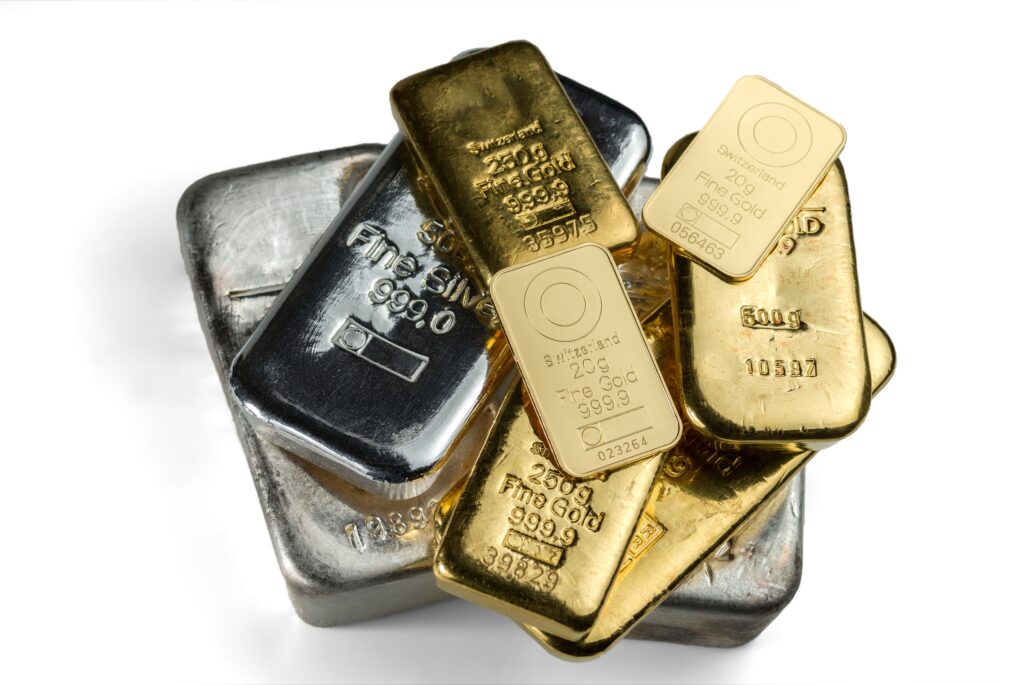
© vladk213 - stock.adobe.com
How is this ratio determined?
These two metals have always been related to one another, so it soon became an accepted commonplace to discuss the gold-silver ratio. Essentially, this is the key figure which is used to express the relation between the price of gold and the price of silver at any particular moment in time. Calculating the gold-silver ratio simply involves dividing the price of one troy ounce of gold by the price of one troy ounce of silver.
Thus, if the gold-silver ratio increases, it means that gold becomes more expensive in relation to silver. But conversely, when the gold-silver ratio is falling, it means that silver is becoming more expensive relative to gold. This gold-silver ratio is currently a little over 72. So remember: to make this calculation, just take the current gold price per troy ounce, i.e. USD 1.944, (as of 9/11/20) and divide this by the current silver price per troy ounce, i.e. USD 26.83 (as of 9/11/20).
Historical perspective
For the past 50 years since the gold standard was abolished in 1971, the average gold-silver ratio has been just over 60. So at 72, today’s value is currently above average. However, the general rule is that a value of between 40 and 80 is not really considered to signal an under- or overvaluation. However, if the value climbs above 80, then silver would be viewed as undervalued (i.e. cheap) compared to gold, while a value of below 40 would be regarded as an overvaluation of silver compared to gold, and would thus make the former metal more expensive.
During the time since the gold window first closed, the gold-silver ratio reached its lowest point in 1980, when one ounce of gold would buy only 14 ounces of silver. The historical high for this time period arrived on 19 March, 2020, at a moment when the global economy was paralysed by the adoption of coronavirus prevention measures. At this point, the gold-silver ratio shot up to around 125 before falling back again. And, as already mentioned, its current value is now 72. It should be noted that, when viewed objectively, the gold price significantly increased in value and purchasing power compared to the silver price during the course of the later 20th century.
If one goes back a little further in this data series, to around the end of the 17th century (1688), a median value of 15 can be determined for the gold-silver ratio. This number is also much closer to the ratio of the respective stocks of each metal which are physically present in the natural world. In comparative terms, it is estimated that silver is roughly 20 times more abundant in the earth than gold.
Antiquity and bimetallism
It is documented that during antiquity gold was considered to be worth around 12 to 13 times as much as silver. According to some historians, this persistent value relationship could have been the result of astronomical observations concerning the locations and inter-relationship between the sun and moon in the heavens. And even today, gold is associated with the sun, while silver is regarded as the moon metal. It is very interesting to note that the orbits of the moon and the sun are actually in a ratio of 27: 360, in other words about 1:13. This is perhaps one important reason why a gold-silver ratio of around 13 should have remained constant for so long throughout antiquity.
Bimetallism (a system in which gold and silver money are both legal tender) is also likely to have orientated itself to this same value, the ratio being mostly somewhere between 10 and 15. During the heyday of bimetallism (from the 18th to the 19th century) both gold and silver coins were minted. These two precious metals circulated side by side and their gold-silver ratio was fixed – in other words, there was a set exchange rate between gold and silver to simplify transactions. In reality, this kind of governmental fixed price arrangement repeatedly leads to a situation where one of the precious metals is overvalued – mostly gold. So what is now known as Gresham’s Law came into play: the precious metal which was overvalued began to drive out the undervalued metal from the marketplace. Thus it seems the inevitable consequence of any government setting a gold-silver ratio is that it almost always leads to a distortion of the market.
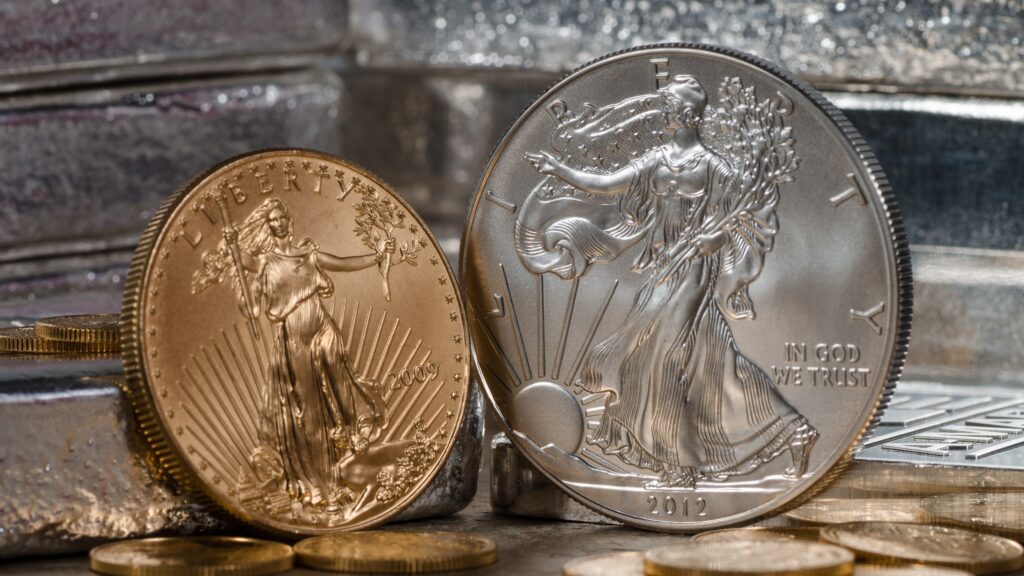
© info78469 - stock.adobe.com
Some economic historians even argue it was this distortion which ultimately led to the demonetization of silver during bimetallism and not, as is commonly assumed, that silver stocks from overseas put pressure on the silver price. Silver was finally demonetized in the USA in 1873, which meant that no further silver coins could be minted. And the fact that silver has historically been officially demonetized against gold perhaps offers a plausible explanation as to why the current gold-silver ratio is very much higher than it was in antiquity.
Summary:
- Gold has always been regarded as the big brother of silver. So the latter soon came to be considered the little man’s gold.
- The gold-silver ratio is the key figure which shows the market relationship between the price of gold and the price of silver.
- A value between 40 and 80 corresponds to the ‘average’ acceptable variation, and signals that there is no real over- or undervaluation.
- For the past 50 years since the gold standard was abolished in 1971, the average gold-silver ratio has worked out at a little over 60.
- A gold-silver ratio of 12 to 13 is documented for antiquity, which according to some historians can be traced back to the natural moon-sun cycle.
- Silver was finally demonetized in the US in 1873. Among other things, this is seen as an explanation for the current gold-silver ratio, which is far higher today than it was in antiquity.



